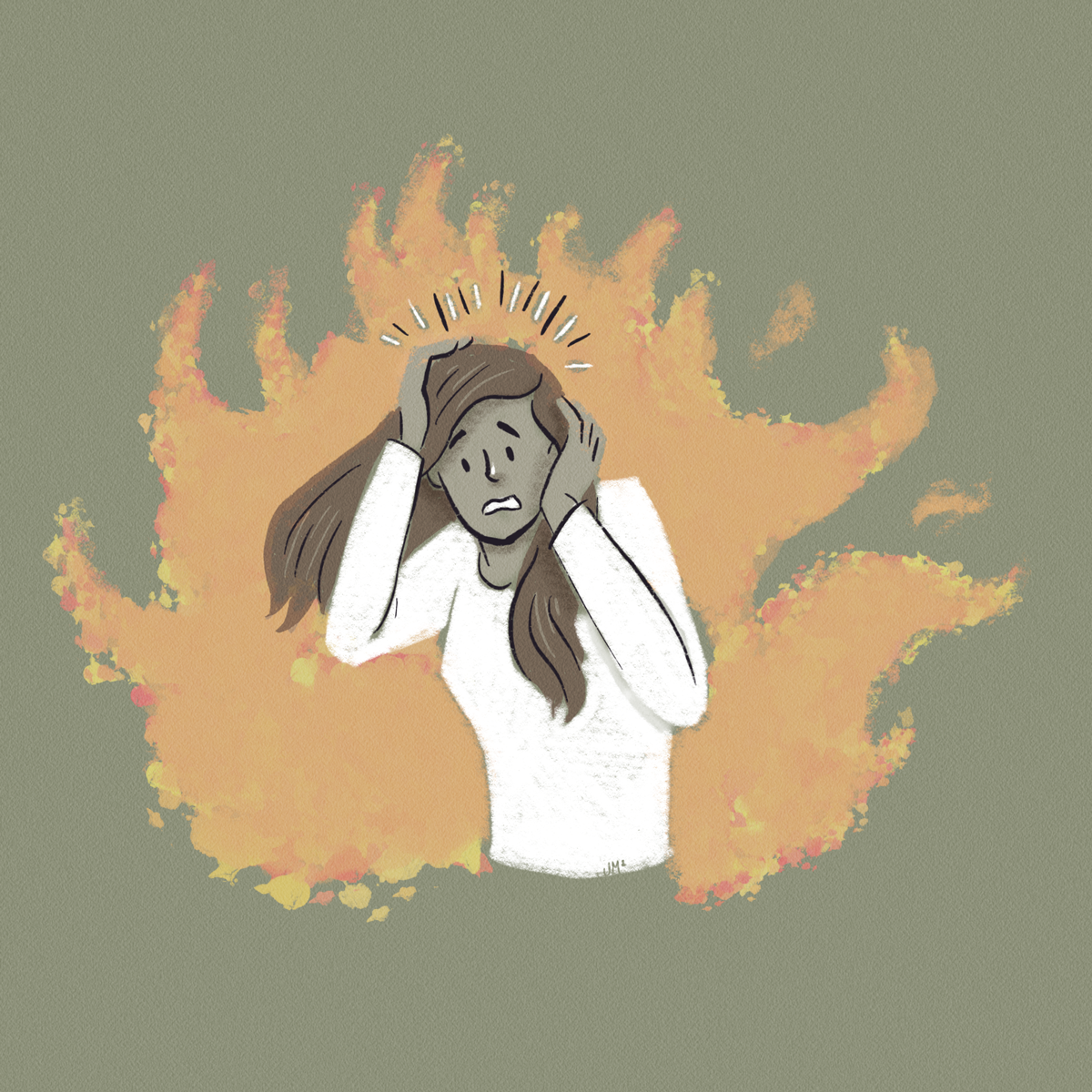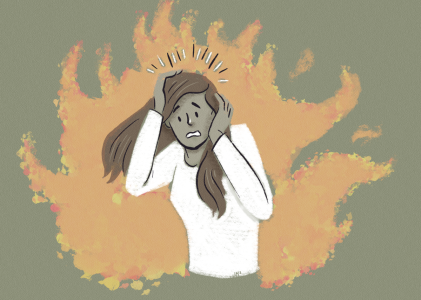How to recognize unhealthy anxiety and what to do about it.
We all feel anxious sometimes. You might get butterflies before speaking to a group or feel tense when driving in heavy traffic. When money is tight, you might worry about paying bills or affording nice things for your kids. Brief periods of anxiety may motivate you to do your best, stay alert, or fix what’s wrong. However, if distress persists and prevents you from taking care of daily activities, it’s no longer adaptive. In fact, it might be an anxiety disorder.

Life is filled with uncertainty. Right now feels like a particularly tumultuous time. The pandemic, climate change, war, political divisions – factors like these make it hard to know what lies ahead. Given all this, it’s no wonder rates of anxiety have soared in the past few years. Globally, anxiety rates increased 25% during the first year of the pandemic. In the US, over 40 million adults (19.1%) have an anxiety disorder and around 7% of children struggle with anxiety each year.
Some of us have been worrying for so long that we don’t notice how often we worry or how much it interferes with our lives. Others of us recognize our worries or fears but have trouble knowing when we need to do something about them. Learning about the symptoms of anxiety can help us figure out when we need to take our worrying seriously.
Symptoms of Anxiety
Several conditions fall under the umbrella of what we call anxiety disorders. These conditions have unique symptoms but share this in common: persistent, excessive fear or worry in situations that are not actually threatening.
In addition, most people with an anxiety disorder experience one or more of the following symptoms:
Emotional symptoms (while worrying):
- Apprehension or dread
- Feeling tense or jumpy
- Irritability or restlessness
- Anticipating the worst and feeling “on guard” for signs of danger
Physical symptoms (while worrying):
- Heart pounding or racing, shortness of breath
- Headaches, fatigue, or insomnia
- Sweating, tremors, or twitches
- Upset stomach, frequent urination or diarrhea
When part of an anxiety disorder, these symptoms occur more often than not and get in the way of performing everyday activities or important tasks.
Types Of Anxiety Disorders
There are many different anxiety disorders, but these are the most common:
Generalized Anxiety Disorder (GAD)
If you have GAD, you tend to expect disaster and worry persistently about everyday things like health, money, family, work, or school, out of proportion to the actual situation. Instead of living in the present moment, engaged with loved ones and activities, you often feel consumed by worry. This can make it hard to concentrate or finish daily tasks. Worrying may exhaust you and lead to headaches, tension, nausea, or other physical symptoms.
Social Anxiety Disorder
If you have social anxiety disorder, you aren’t just shy. You feel intensely afraid of social interactions because you expect to humiliate yourself by saying something stupid, not knowing what to say, showing physical signs of discomfort (e.g., sweating, trembling), or committing some other social faux pas. You may avoid taking part in conversations or offering your ideas. You may refuse to speak in front of a group or turn down work or school opportunities that require public speaking. You may avoid parties or other social situations or endure them with intense discomfort. If left untreated, social anxiety disorder may cause you to isolate or achieve less than your potential.
Panic Disorder
If you’ve ever suddenly felt terrified for no apparent reason, like you were having a heart attack, you may have had a panic attack. Panic attacks cause powerful physical symptoms including racing heart, chest pains, dizziness, nausea, shortness of breath and other intense sensations. If you worry persistently about having another attack or take desperate measures to avoid having another attack, you might have panic disorder. If left untreated, you may experience more frequent attacks or develop agoraphobia.
Phobias
Many of us feel uncomfortable around certain things, animals, or situations. We might not like spiders or Styrofoam beads, but we can tolerate them without much difficulty. However, if specific objects or situations cause you intense fear out of proportion to their actual threat, you might have a phobia. If you work hard to avoid encountering those objects or situations that elicit your fear, and this keeps you from doing things that you need or want to do, you might have a specific phobia disorder.
For example, if you have a snake phobia, seeing just a picture of a snake may cause you extreme distress, even though you know it can’t actually hurt you. You might avoid going for a walk with friends in the park because of the remote possibility you’ll see a snake there. Your phobia triggers intense, irrational fear and causes you to miss out on fun activities (unless you really just hate walking).
Treatment for Anxiety
If you have an anxiety disorder, it’s unlikely to go away on its own and may actually get worse over time. Fortunately, anxiety disorders are highly treatable and respond well to these methods:
- Psychotherapy, including cognitive behavioral therapy
- Medications, including anti-anxiety medications and anti-depressants
- Complementary health approaches, including stress and relaxation techniques
Why get treatment for anxiety?
Untreated anxiety is serious. It causes all sorts of issues, from making life less enjoyable to damaging your physical health. It may put you at risk for substance abuse, digestive issues and heart disease. For children and teens, untreated anxiety can damage academic and social development and put them at risk for developing depression and other disorders.
Untreated anxiety makes your life harder and smaller.
Next steps
If you or someone you love struggles with anxiety, talk to your primary care doctor or contact Athena Care. Get professional help before it gets worse.

Rachel Swan, MS
Editor
Rachel has a Masters of Science in Clinical Psychology from Vanderbilt University, where she spent 16 years as a Research Analyst in the Psychology and Human Development Department.


